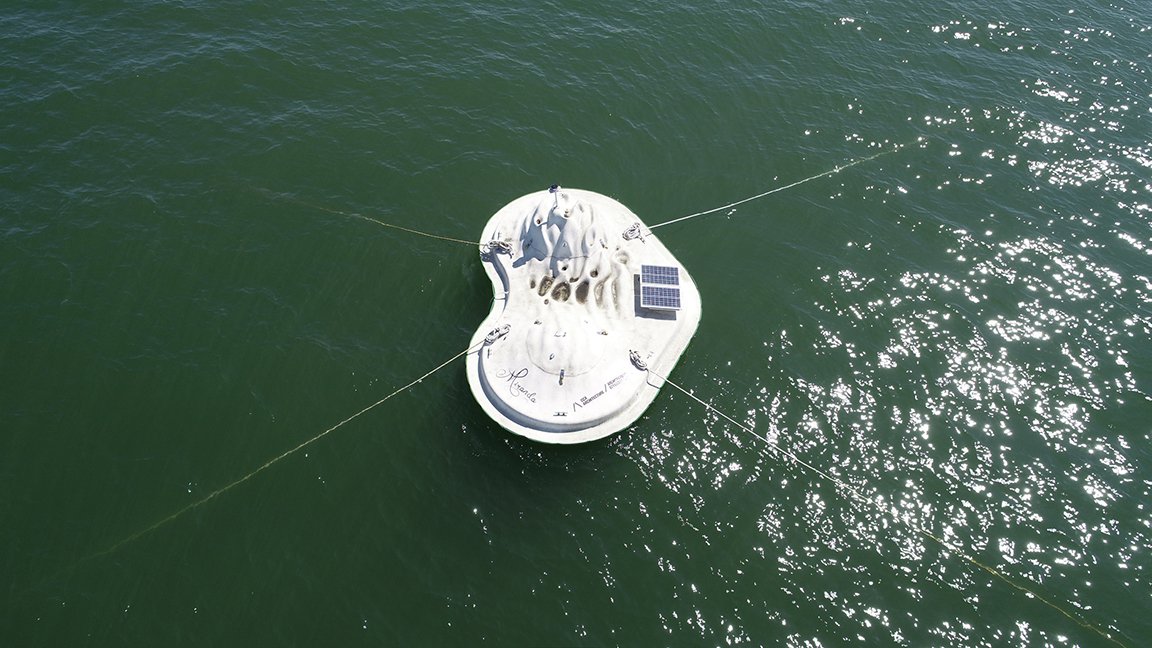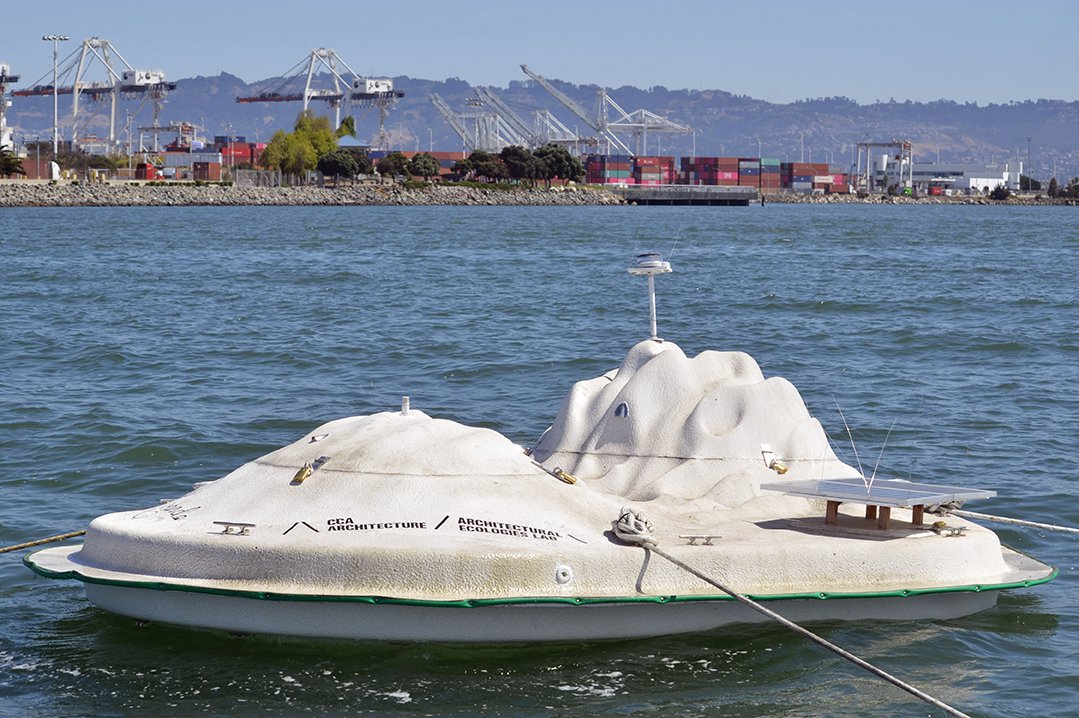This floating lab could help us cope with coastal erosion and rising sea levels
A new experiment in floating architecture in California aims to enhance marine habitats, alleviate coastal erosion and could point the way to floating cities that help humanity deal with rising sea levels.
T
he world’s oceans have been described as the “epicenter of global warming”. Ocean acidification and coral bleaching, for example, are having a catastrophic effect on biodiversity and marine life.
Meanwhile, rising sea levels are threatening cities and other densely-populated areas; the IPCC predicts levels between 61cm and 1.1m by 2100, depending on greenhouse gas emission levels, but says that the rise could be “substantially higher”.
A new project in the San Francisco Bay, the Buoyant Ecologies Float Lab, is exploring how floating architecture can enhance marine habitats and alleviate coastal erosion. This is particularly important in the San Francisco Bay, where native flora and fauna are under threat from non-native ‘invasive’ species, some introduced intentionally and others brought in attached to ships or in ballast water.
An attractive landscape for marine life
The Float Lab is the work of a multi-disciplinary team from the California College of the Arts, together with scientists from the Benthic Lab at Moss Landing Marine Laboratories, who specialise in coastal marine, deep-sea, estuarine and freshwater systems, as well as experts from the Port of Oakland.
According to the team, the prototype “merges expertise from design, advanced digital manufacturing and marine ecology to imagine a new kind of architecture for climate adaptation”.

Above the surface the 14-feet long Float Lab, which is kept buoyant by 1,200 pounds of concrete ballasts, has two ‘mountains’ with a valley in between. The topography, which is mirrored below the surface was algorithmically generated by a computational design program to create a landscape that would be attractive to marine life. An irrigation pump collects seawater and channels it to create tidal pools. Underneath are surfaces designed to tempt invertebrates, such as barnacles and sponges, as well as spaces that serve as ‘fish apartments’, where fish can hide from predators.
The team said: “The substrate is designed to create a range of scales of habitats for marine invertebrates, creating small pockets of space that protect smaller creatures from predators. This strengthens the food chain and increases biodiversity.”
A giant sponge of animals
Early prototypes attracted all kinds of creatures, including marine worms, sponges, crabs, oysters and sea urchins. The team expects similar species to inhabit the Float Lab, which will be moored in Oakland’s Middle Harbor Shoreline Park, opposite San Francisco, for the next three years. A team of divers will survey the underside every month, to inspect its progress.
The Float Lab was made from fibreglass by Kreysler & Associates, a California firm that specialises in custom composites. To minimise waste, the top and bottom halves are made from the same mold and then flipped, rotated and fixed together.
The team plans to attach long tubes to the bottom of the structure so that more invertebrates can attach themselves, forming a “giant sponge of animals”. As well as stimulating biodiversity, this could help limit the effects of climate change by turning the Lab into a floating breakwater.
“In large masses, this biological growth can help attenuate wave action and reduce coastal erosion – one of the primary impacts of climate change and sea-level rise,” the team said.

A floating island solution
The Lab is also designed to be modular, so that other structures can be connected to it to make an artificial reef. The scientists will run computer simulations on the data they gather over the course of the experiment to see what effect a whole cluster of Float Labs might have.
Though it isn’t the primary goal of the research, the Float Lab might also contribute to an understanding of how floating architecture might help communities displaced by rising sea levels over the coming decades.
The UN has been exploring the possibility of floating cities – networks of small, artificial islands, as a way of achieving its Sustainable Development Goals.
Aside from its impact on marine diversity and coastal erosion, the design innovations in the Float Lab might one day be found on the underside of floating cities all over the world.
The ideas presented in this article aim to inspire adaptation action – they are the views of the author and do not necessarily reflect those of the Global Center on Adaptation.